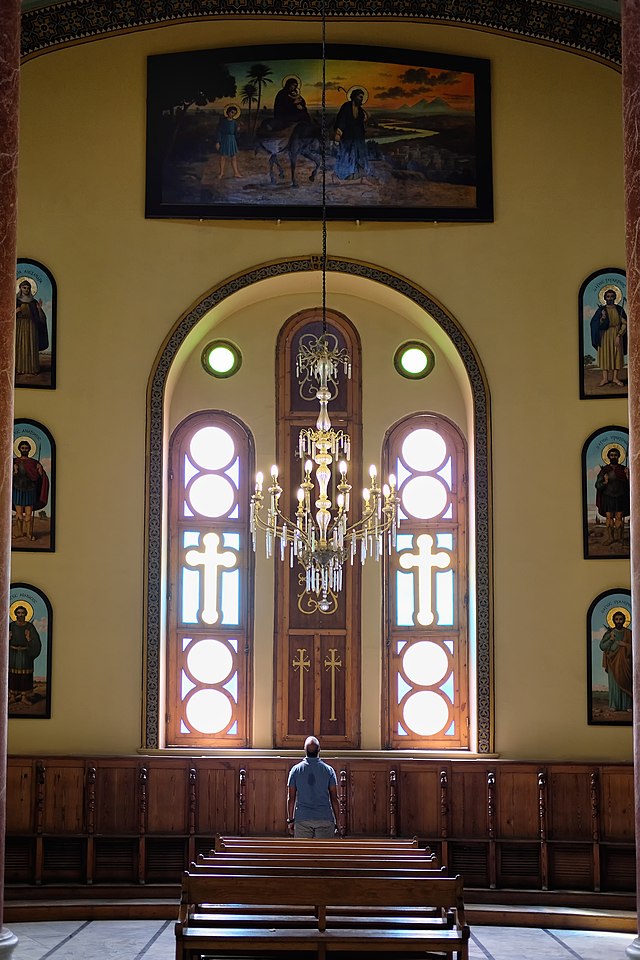Top Qs
Timeline
Chat
Perspective
Church of St. George (Cairo)
Church in Coptic Cairo, Egypt From Wikipedia, the free encyclopedia
Remove ads
The Church of St. George (Greek: Εκκλησία Αγίου Γεωργίου; Arabic: كنيسة القديس جورج) is a Greek Orthodox church within the Babylon Fortress in Coptic Cairo.[1][2][3] It is part of the Holy Patriarchal Monastery of St George under the Greek Orthodox Patriarchate of Alexandria and all Africa.[1]

The church dates back to the 10th century (or earlier). The current structure was rebuilt following a 1904 fire, with construction completed in 1909.[4][5] Since 2009, the monastery's hegumen has held the rank of bishop with the title Bishop Babylonos ("Bishop of Babylon").[6]
Remove ads
Additional Structures and Features
Summarize
Perspective
Architectural Layout
The Church of St. George is circular in form and supported by eight internal columns. Its design is architecturally comparable to the Basilica of San Vitale in Ravenna.[1]
The church was once enclosed by an ancient wall that spanned half a square kilometer, though most of it has been lost. In 1998, the Greek government funded the reconstruction of the wall with two main entrances: one leading to the residence of the Hegumen, and the other to the Greek cemetery on the premises.[1]
Monastic Complex
The monastery houses several significant features:
- The official residence of the Patriarch of Alexandria is located within the monastery grounds.
- Adjacent to the church is the Museum of the Greek Orthodox Patriarchate of Alexandria, which contains icons and ecclesiastical relics.
- Inside the church is a nilometer—an ancient instrument for measuring the Nile River’s water levels—positioned at the center of the floor.
- Underneath the church, within the first level of the fortress structure, are chapels and the tombs of former Patriarchs of Alexandria. These areas are currently closed to the public.
Cemetery and Funeral Chapel
A cemetery on the grounds is divided into Greek and Coptic sections. At its center stands the Church of the Dormition of the Theotokos, which is used only for funeral services.[1]
Holy Family Tradition
A chapel attached to the church is traditionally believed to mark the site of a cave where the Holy Family is said to have sought refuge during their flight into Egypt.[1]
Historical Mentions
While the Coptic monastery is mentioned as early as the 10th century, references to the Greek Orthodox monastery begin in the 15th century. In the 1550s, Russian traveler Vasily Poznyakov visited the monastery and described a miraculous icon of Saint George located behind bronze bars, revered for healings and miracles:
"In Old Egypt there is a great church of Saint George the Trophy-Bearer, a women’s monastery, and in the church, on the left side, is an icon of Saint George behind bronze bars. Many miracles and healings are attributed to this icon."
Remove ads
Gallery
- Bas-relief of Saint George slaying the dragon with a spear, at the church entrance
- View of the entrance to the Monastery of Saint George
References
External links
Wikiwand - on
Seamless Wikipedia browsing. On steroids.
Remove ads





